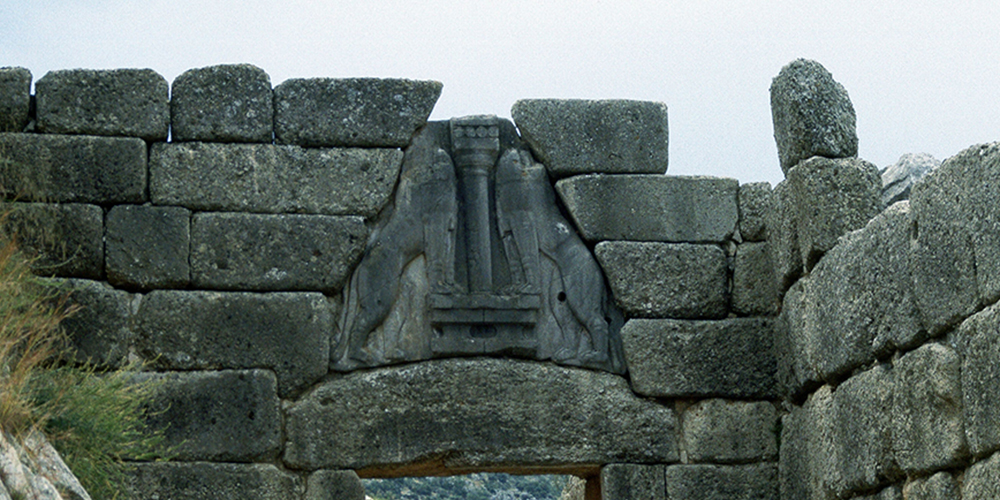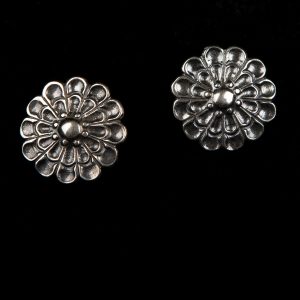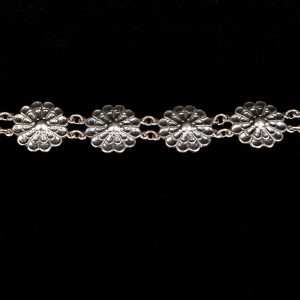
Archeological findings suggest that Mycenae was first occupied during the Later Neolithic Era or earlier. However, very few traces from that period, as well as the subsequent Early Helladic Era (3,000 B.C.) exist on the acropolis (citadel built on a hill): The continuous reoccupation of the site and the consecutive phases of architectural development have destroyed previously existing structures and objects, leaving very few records.
The early years
The Achaeans, one of the first Greek-speaking tribes, first arrive and settle in the area around 2000 B.C. and Mycenae begins to flourish due to the area’s advantageous position. Founded in the north-east corner of the Argive plain, it easily overlooked the mainland, and could control all easy routes to the Isthmus of Corinth, as well as maritime transport. The city’s eventual supremacy is natural.
The first significant findings belong to the Middle Helladic period (c. 2000–c. 1550 BC). A period of great affluence and expansion across the Mediterranean begins around 1450 BC for Mycenae, lasting until circa 1200 BC. The first circuit wall is constructed around 1350 BC and the unfortified residence of the ruler (King or Anax) is converted into the citadel. The construction of the monumental palace on the hill’s summit begins a few years later.
A flourishing civilization
The peak of Mycenaean civilization continues in the 13th century, and a period of great construction begins in 1250 BC: The Lion Gate and the ‘The Treasury of Atreus” is constructed, and the wall is extended. The northeastern part of the Citadel is added to Mycenae’s fortification near the end of the 13th century, and the circuit wall reaches its final form, which has been largely preserved to this day. Mycenae’s power, prestige, and influence continue to grow to the end of the century. According to scholars, the mythical Trojan War is based on a historical conflict that took place a few years before 1200 BC.
Around 1200 BC, the palace, the city’s Cult Centre and many other parts of the citadel were burned down. Though the palace complex was abandoned, many other buildings and areas including the Cult Centre and the outer city were repaired and remained in use until 1100 B.C, when they were again destroyed in a great fire. Afterwards, although the acropolis or citadel had been destroyed, Mycenae was still inhabited. During the Geometric Period, various buildings and structures were built on top of the ruins of the Mycenaean palace; later, an Archaic temple dedicated to Hera or Athena was constructed on the summit.
The Classical years
During the Classical Period, it took part in one of the most glorious moments of Ancient Greek history, the Persian Wars. However, the nearby city-state of Argos captured Mycenae and razed part of the fortifications in 468 BC. The people of Argos would later found a new town on the Mycenae hill at some point during the Hellenistic period; they repaired the walls, constructed many new buildings on top of the ruins of the citadel, and built a small theatre over the path to the beehive Tomb of Clytemnestra. The site was later abandoned: its ruins had already become a tourist attraction by the second century AD.
Henceforth, Mycenae becomes a legend and only emerges from oblivion in the 19th century, when its excavation begins.
more moments
Recent Posts
The Mycenaean roses set
Share this:
- Click to share on Twitter (Opens in new window)
- Click to share on Facebook (Opens in new window)
- Click to share on LinkedIn (Opens in new window)
- Click to share on Reddit (Opens in new window)
- Click to share on Tumblr (Opens in new window)
- Click to share on Pinterest (Opens in new window)
- Click to share on Pocket (Opens in new window)
- Click to share on Telegram (Opens in new window)
- Click to share on WhatsApp (Opens in new window)




